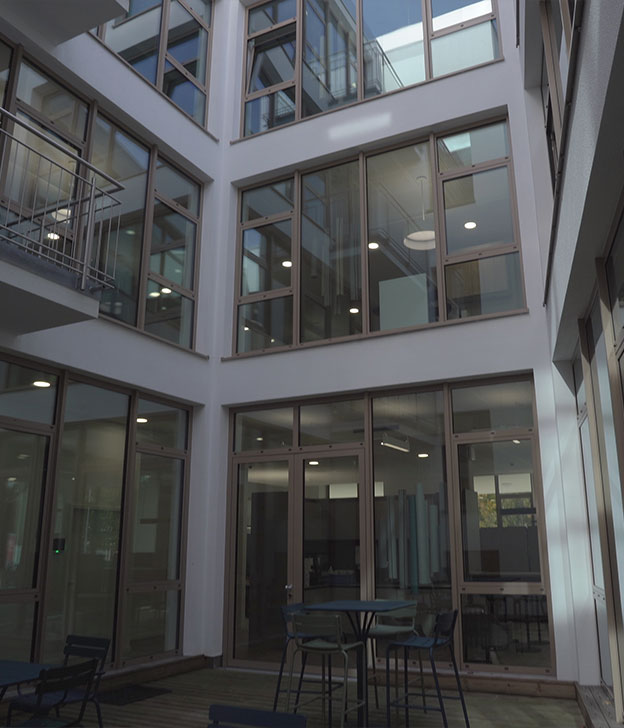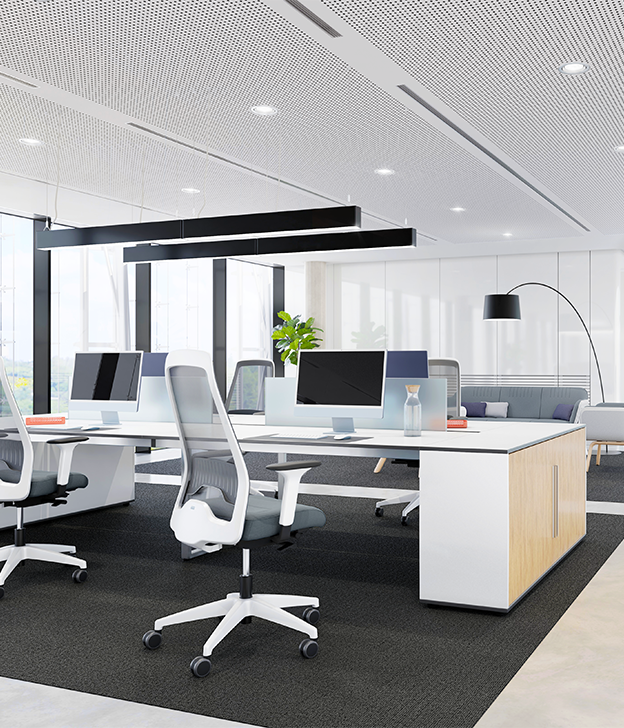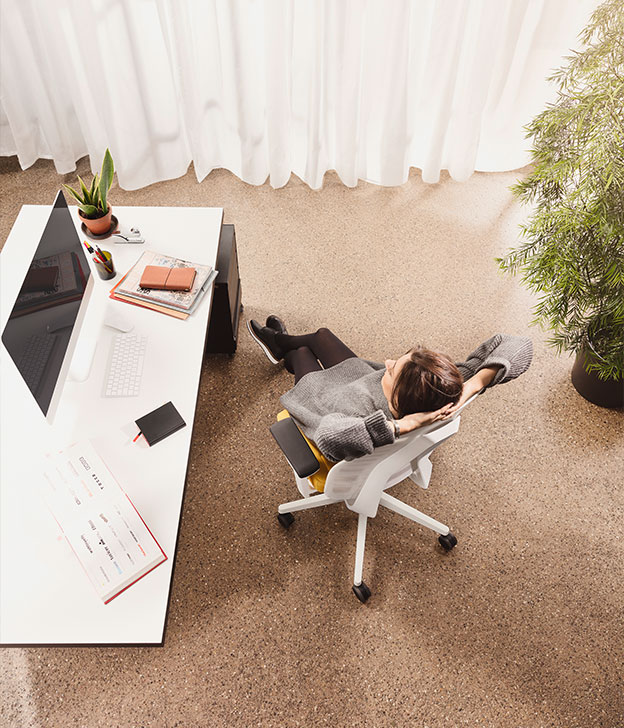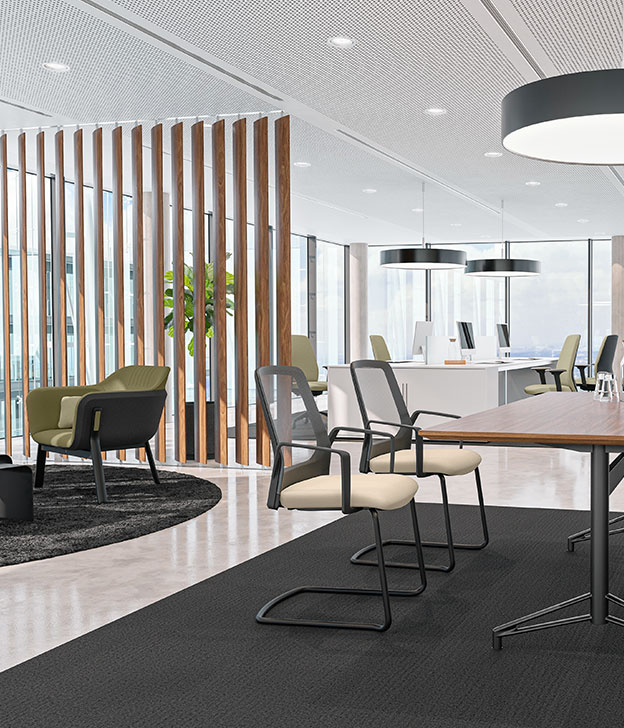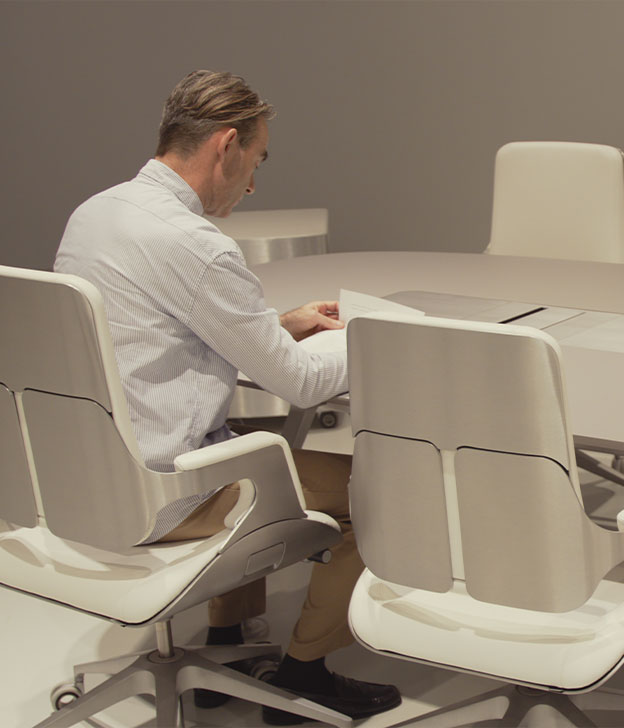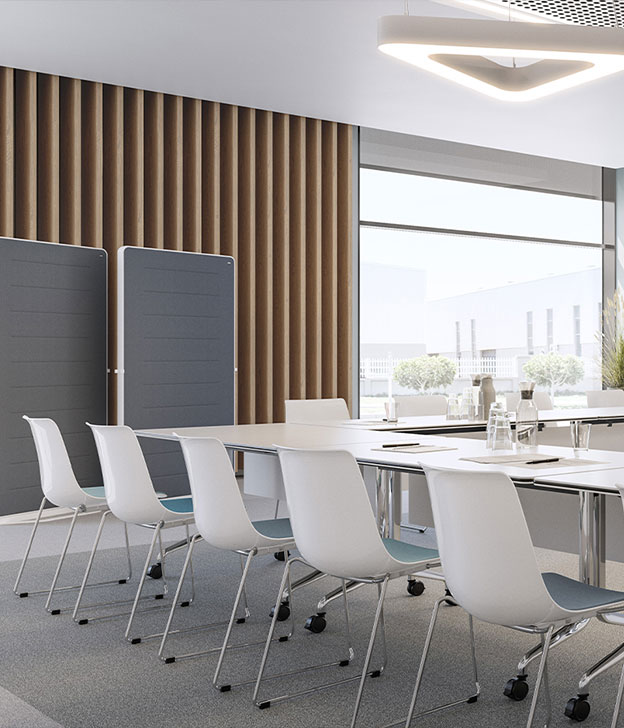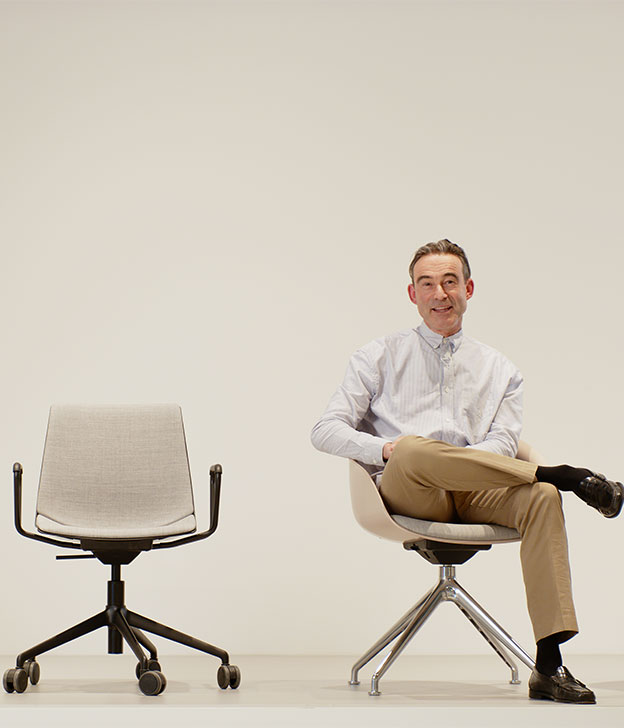Sustainability in offices - how to implement it correctly
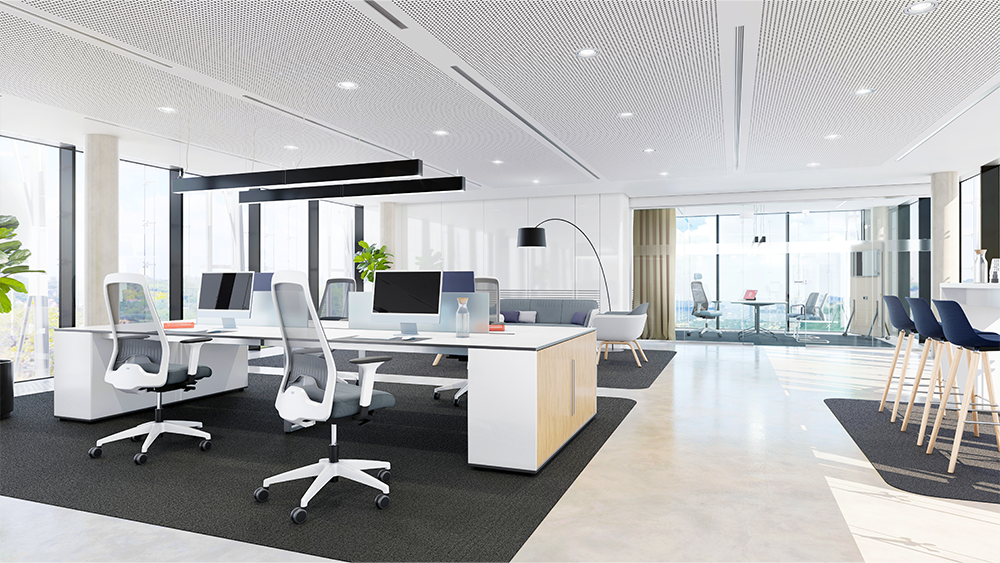
How can companies implement sustainability?
Sustainability in offices is much more than just a buzzword, it's a comprehensive concept that affects all of a company's processes and structures. It's about adapting workflows, protecting resources and setting the course for a sustainable and future-proof corporate strategy.
Within this, it's crucial that sustainability isn't just considered from environmental and economic perspectives. The human factor plays a pivotal role: It must be ensured that working conditions promote employee wellbeing and development, while also reflecting the company's social responsibility.
What are the areas where you can implement sustainability?
Sustainability in offices can essentially be divided into three categories. The three pillars of sustainability are referred to as
- environmental,
- economic and
- social
sustainability. It's important to note that all three pillars must be considered equally and harmonised with each other. This creates a working environment that not only protects the Earth but also the people living and working on it.
Environmental sustainability
Possibly the most obvious pillar of sustainability is the environmental pillar. This pays particular attention to the environment and making responsible use of natural resources.
This means that resources should be preserved such that they can be naturally restored. This also includes using less plastic and as few chemicals and toxins as possible.
At the same time, it's important to use renewable energy sources, such as wind or solar energy, to keep emissions low, to promote green behaviour and to minimise your carbon footprint - whether as an individual or a company.
Economic sustainability
The second pillar of sustainability is economic sustainability. This not only focuses on maximising a company's profits but also on its benefit to society.
A long-term strategy should target the general public's quality of life - both for current and future generations. This includes promoting fair trade, using high-quality raw materials and investing in both education and environmental projects in order to sustainably secure the future of society.
Social sustainability
Finally, the third pillar is social sustainability and this now plays an increasingly important role - particularly in working environments. Crucial elements are equal opportunities, professional and personal development and secure jobs.
The concept of 'New Work' has been gathering momentum in recent years and is becoming an increasingly important obligation that more and more employers have been assuming.
Tips for offices: What does a sustainable workplace look like?
Precisely what areas can companies implement sustainability in and effectively improve both employee wellbeing and their productivity?
We provide some useful tips for successfully implementing sustainability at the workplace and how to use 'green building' to turn your organisation into a place of wellbeing that meets official architectural standards!
Digitalisation at the workplace
Digitalising the workplace offers a wide range of opportunities for promoting sustainability in everyday office life from the environmental, economic and social perspectives.
- Reduced emissions: In order to avoid long business trips and the associated CO2 emissions, companies can consider holding meetings and events that don't necessarily have to take place in person in an online format.
Hybrid work models that incorporate working from home can therefore enable greater sustainability due to the reduction in emissions brought by the decrease in commuting traffic. This not only protects the environment but also helps employees to achieve a better work-life balance through this model of work. - Paperless offices: This is a further step for reducing your carbon footprint. By using cloud computing, you can also reduce your own server infrastructure which, in turn, will reduce your energy consumption - if you opt for an energy-efficient provider.
You should also pay attention to energy efficiency when choosing office equipment. Moreover, as part of a 'green IT' policy, you should recycle old electronic equipment. - Monitoring energy and resources: This area is about identifying potential savings and making efficient use of them. This can be achieved by implementing smart lighting concepts that not only save energy but also have a positive impact on the working atmosphere. Companies can therefore make a valuable contribution to environmental protection, while also creating a modern, employee-oriented working environment in which everyone feels comfortable.
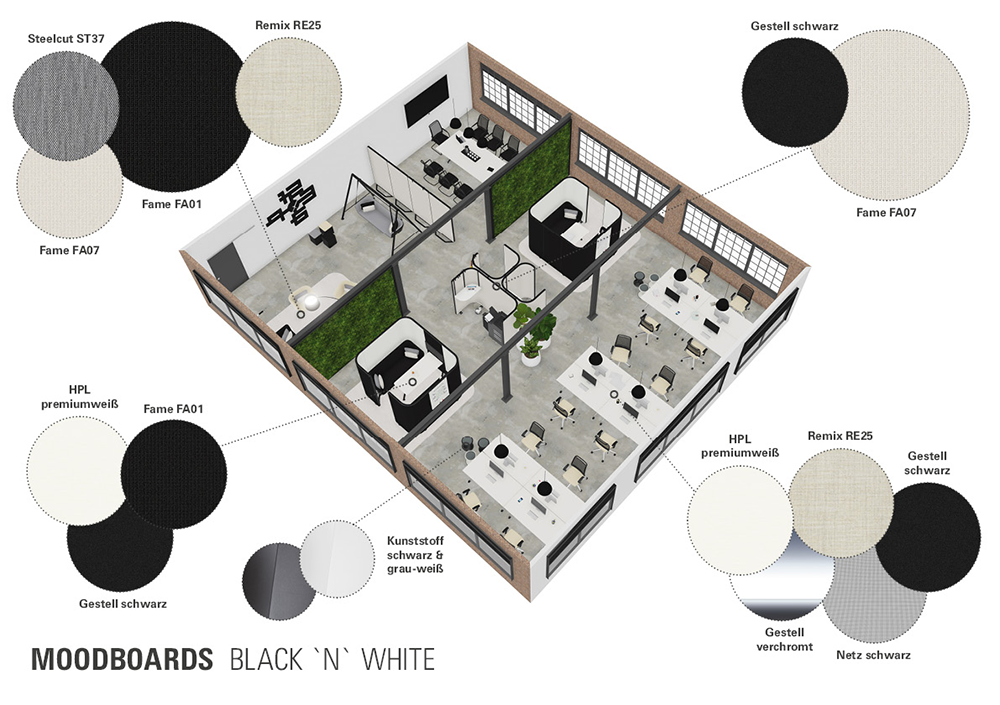
Practical interior design
Optimising how space is used in a targeted manner and intelligently dividing rooms are key components of modern office design and can be achieved with modular office furniture. This furniture offers flexibility and efficiency by enabling you to adapt to changing requirements and therefore to make optimal use of the available space.
- Dividing rooms correctly: Dividing up space in an energy-efficient manner helps to reduce the energy demand for heating, air conditioning and lighting.
Workstations should be installed as close to windows as possible to make the best use of the natural light, while also minimising your dependency on artificial light sources.
This measure not only boosts energy efficiency, but also has a positive effect on employee wellbeing and productivity, and can particularly lift motivation on spring-like or summery days. - The right plants: Establishing green areas with plants improves the air quality and contributes to the general atmosphere of a 'green office'.
After all, plants are known to help to relieve stress and to convey a sense of calm. Moreover, they also improve room acoustics and contribute to energy efficiency and a pleasant working climate by regulating the room temperature. - The right acoustics: Having well-designed acoustics is essential for reducing noise and increasing and maintaining concentration. Installing soundproof furniture, such as acoustic screens or ceiling panels, minimises disruptive noises and creates a more pleasant working environment, which is hugely beneficial during meetings.
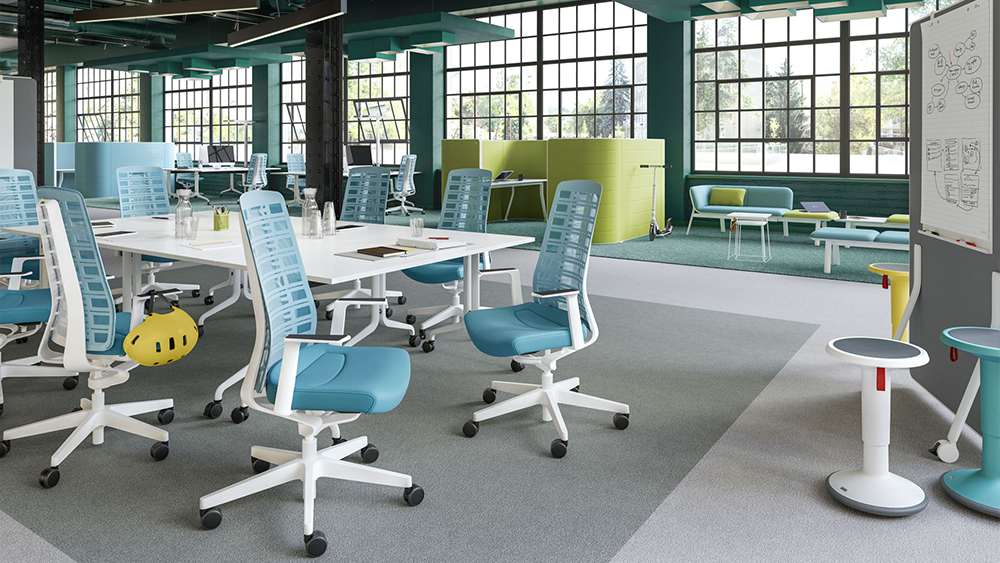
Efficient lighting concepts
To ensure that employees can actually see what they're currently working on, it's vital to have efficient lighting concepts in an office. After all, artificial light - whether originating from lamps or screens - is not ideal for the eyes in the long run and for concentration at the workplace.
- Natural light: Natural light is a key factor in ensuring a healthy and productive working environment. Having large windows, light translucent curtains and an open room layout ensure that optimal use is made of the natural light outside and can significantly improve wellbeing at the workplace.
This also helps the office plants to remain healthy and maintained. In addition, it is recommended that you use LED lamps because they're not only more energy efficient but also last longer than traditional lights. - Intentional energy consumption: By adopting intentional energy consumption, which is based on whether employees are present or absent, you can help your company to save energy. In addition, ergonomic lighting, which adjusts its colour temperature and intensity to the work currently being performed, can also help employees to focus or relax.
Our tip: Last but not least, we recommend regularly reviewing your energy consumption in the form of an energy audit. This is an indispensable tool for continuously improving your energy efficiency and minimising your environmental impact.
nable office equipment
Ultimately, choosing the right interior design for your office is vitally important when transforming it into a green office. You therefore need to not only pay attention to the office furniture you choose and how it is produced, but also its functionality and health advantages.
- Selection: When selecting office furniture and furnishings, you should ensure that it is of the highest quality. Products that are long-lasting, modular, easy to repair and can be upgraded and reused are the perfect choice for a sustainable office. This kind of green interior ensures that resources are conserved and end products have the longest possible lifetimes.
- Production: You should also pay attention to how this furniture is manufactured. Sustainable and environmentally-friendly production methods that are proven by certification, such as the FSC (Forest Stewardship Council) for wood products or 'Greenguard' for low-emission furniture, ensure that resources are used responsibly and the environment is protected.
- Functionality: Another important aspect is the functionality of sustainable office equipment. Having ergonomic furniture supports employee health and wellbeing. It promotes a health posture, reduces the risk of postural damage and therefore paves the way for improved employee wellbeing and increased productivity.
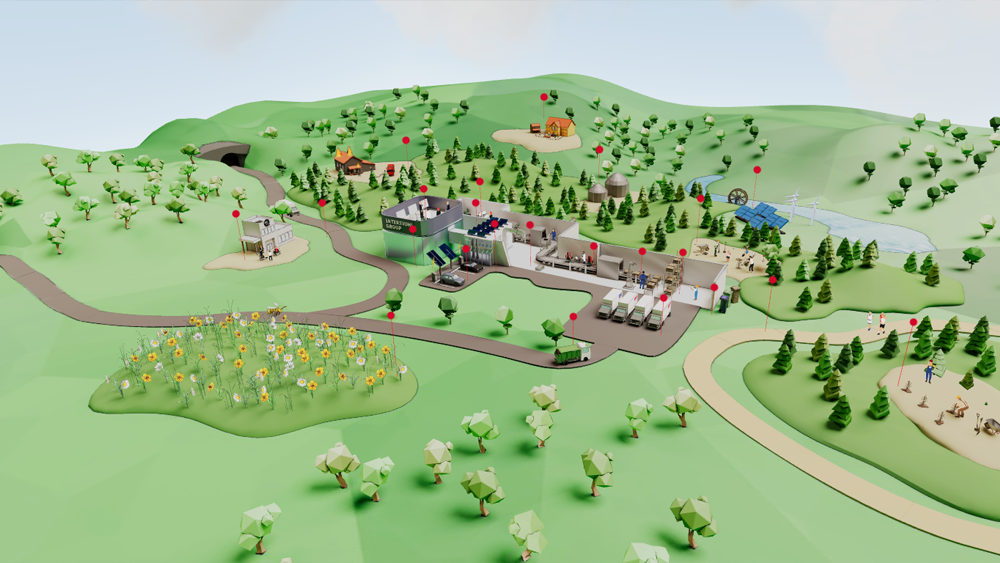
How can companies improve even further?
Companies that implement sustainability in their offices never stand still and are constantly looking for ways to optimise their processes and structures and to further advance the concept of 'New Work'. Potential areas for optimisation are often brought about by technological progress and the innovative use of new methods and materials.
Data analyses and artificial intelligence help to control resource consumption with greater precision and to increase efficiency. In addition, optimisation is needed with respect to more actively incorporating employees into decision-making processes, which can lead them to more strongly identify with sustainability. The concept of lifelong learning helps employees to continuously develop and remain adaptable.
The world of Interstuhl: Experience sustainability
Interstuhl is committed to environmentally-friendly production and a sustainable product cycle - and this is reflected in every detail. In addition, as a family-owned company, social wellbeing is important to us. Each year, around 0.5% of our turnover is dedicated to projects to strengthen our community, for example in the form of nurseries and schools, youth work and clubs. We're proud to have been climate-neutral as a company group since 2021. Dive in and find out how we can make a better future together - because we're passionate about the future.
Magazine
